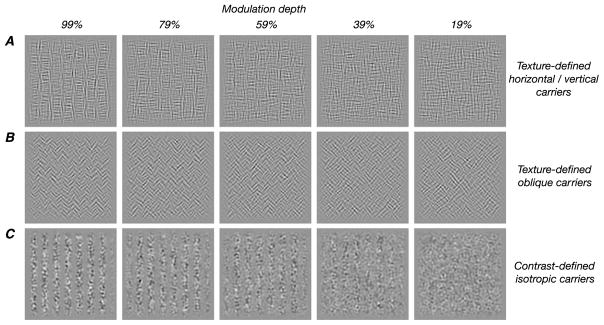Figure 2.
Texture modulation depth. Example stimuli showing the effect of varying the depth of texture modulation. Columns from left to right show stimuli of decreasing modulation depth (99%, 79%, 59%, 39%, and 19%). (A) Texture-defined form stimuli composed of horizontal/vertical carrier patterns (created as shown in Figure 1). (B) Texture-defined form stimuli composed of right/left oblique carrier patterns. (C) Contrast-defined form stimuli created by sinusoidal contrast modulation of an isotropic noise carrier pattern.

